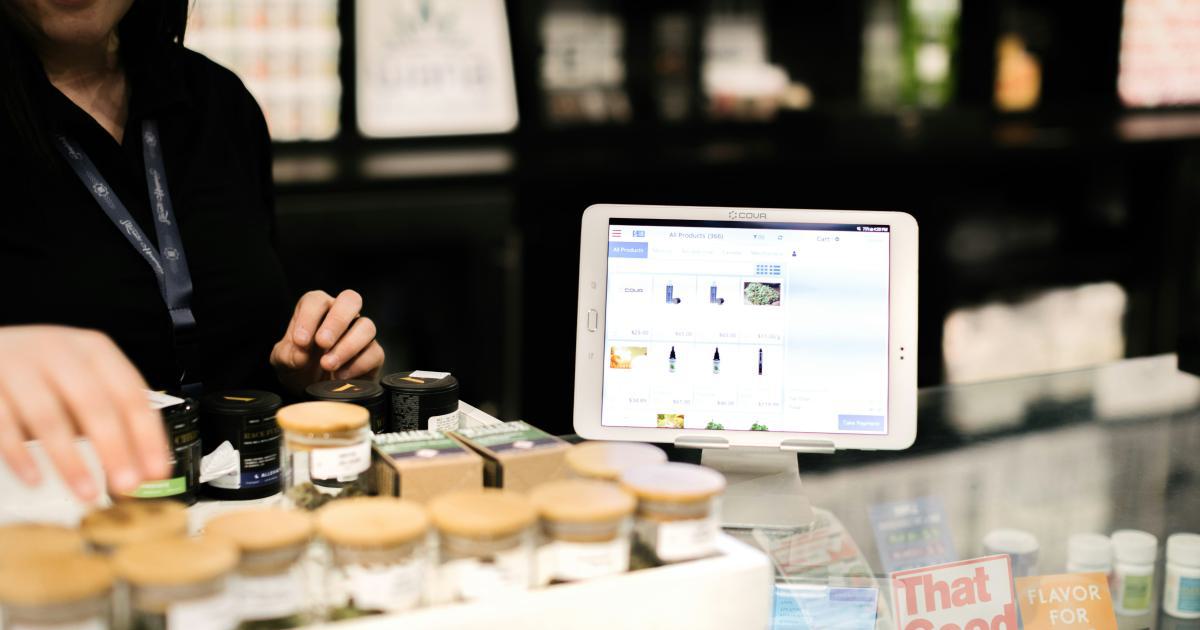Why Is Tracking Conversion Funnel Metrics Crucial?


In the dynamic world of digital marketing, understanding the customer journey and optimizing the conversion funnel is a crucial aspect of business success. The conversion funnel, often visualized as a metaphorical funnel, represents the process customers go through from initial awareness to final conversion, such as a sale or a desired action. Tracking and analyzing the metrics associated with this funnel can provide invaluable insights that drive strategic decision-making and help businesses achieve their goals.
Understanding the Conversion Funnel
The conversion funnel is a model that illustrates the different stages a customer goes through before completing a desired action, such as making a purchase, signing up for a newsletter, or downloading a product. The funnel typically consists of the following stages:
Awareness: This is the initial stage where potential customers become aware of your product or service. They might discover your brand through various marketing channels, such as social media, search engines, or advertising.
Interest: At this stage, potential customers have shown interest in your offering and are exploring more information about it. They might visit your website, read reviews, or engage with your content.
Consideration: Customers in the consideration stage are actively evaluating your product or service and comparing it to alternatives. They might be weighing the pros and cons, considering their needs, and deciding whether to proceed with a purchase or action.
Conversion: This is the final stage where the customer takes the desired action, such as making a purchase, submitting a lead form, or signing up for a service.

Understanding the different stages of the conversion funnel is essential for businesses to identify potential bottlenecks, optimize the customer journey, and ultimately improve their overall conversion rates.
The Importance of Tracking Conversion Funnel Metrics
Tracking and analyzing the metrics associated with the conversion funnel is crucial for several reasons:
1. Identifying Potential Bottlenecks
By closely monitoring the metrics at each stage of the conversion funnel, businesses can identify where potential bottlenecks or drop-offs are occurring. This information can help them pinpoint the areas that require immediate attention and optimization.
For example, if the website has a high bounce rate at the awareness stage, it could indicate that the content or messaging is not resonating with the target audience. Identifying and addressing this issue can lead to improved engagement and a higher number of potential customers entering the funnel.

2. Optimizing the Customer Journey
Tracking conversion funnel metrics allows businesses to understand the customer journey and make data-driven decisions to improve the overall experience. By analyzing the metrics at each stage, businesses can identify pain points, test different strategies, and implement changes to make the customer journey more seamless and efficient.
For instance, if the data shows that customers are abandoning their shopping carts at a high rate during the consideration stage, it could indicate issues with the checkout process, pricing, or shipping options. By addressing these pain points, businesses can improve the customer experience and increase the likelihood of conversion.

3. Allocating Marketing Resources Effectively
Tracking conversion funnel metrics can help businesses make more informed decisions about where to allocate their marketing resources. By understanding the performance of different marketing channels and their impact on each stage of the funnel, businesses can prioritize their efforts and investments to maximize their return on investment (ROI).
For example, if the data shows that a particular social media platform is driving a significant number of qualified leads (interest stage) but has a low conversion rate, the business might decide to shift more resources towards improving the conversion process rather than solely focusing on awareness-building activities on that platform.

4. Improving Forecasting and Goal-Setting
Analyzing conversion funnel metrics over time can help businesses better predict future performance and set more accurate goals. By understanding the historical trends and patterns within the funnel, businesses can make more informed projections about customer acquisition, revenue, and other key performance indicators (KPIs).
This information can be particularly valuable when planning budgets, setting growth targets, and aligning the organization's strategic objectives. Accurate forecasting based on conversion funnel data can help businesses make more informed decisions and allocate resources more effectively.

5. Personalized Customer Experiences
Tracking conversion funnel metrics can also enable businesses to provide more personalized experiences to their customers. By understanding the specific behaviors and preferences of customers at each stage of the funnel, businesses can tailor their marketing messages, product recommendations, and interactions to better meet the needs of individual customers.
For instance, if the data shows that customers who engage with a particular piece of content are more likely to convert, the business can use that information to create personalized content recommendations or targeted advertising campaigns to nurture those leads more effectively.

Key Conversion Funnel Metrics to Track
To effectively leverage the insights from the conversion funnel, businesses should track a range of metrics that provide a comprehensive understanding of the customer journey. Some of the key metrics to consider include:
1. Awareness Stage Metrics
- Website Traffic: The number of visitors to your website, often broken down by source (e.g., organic search, paid ads, social media).
- Impressions: The number of times your content or advertising is displayed to potential customers.
- Brand Awareness: The level of familiarity and recognition your brand has among your target audience.
2. Interest Stage Metrics
- Engagement: Metrics such as bounce rate, average time on page, and pages per session, which indicate how engaged visitors are with your content.
- Lead Generation: The number of leads (e.g., email signups, content downloads) captured through your marketing efforts.
- Social Media Interaction: Metrics like likes, shares, and comments, which showcase the level of interest and engagement on social platforms.
3. Consideration Stage Metrics
- Add-to-Cart Rate: The percentage of visitors who add a product to their shopping cart.
- Cart Abandonment Rate: The percentage of customers who start the checkout process but do not complete the purchase.
- Product Page Views: The number of times a specific product page is viewed, indicating customer interest.
4. Conversion Stage Metrics
- Conversion Rate: The percentage of visitors who complete the desired action, such as making a purchase or signing up for a service.
- Average Order Value (AOV): The average amount spent by customers per transaction.
- Customer Lifetime Value (CLV): The estimated total value a customer will bring to the business over the course of their relationship.

By tracking and analyzing these key metrics, businesses can gain a comprehensive understanding of the customer journey, identify areas for improvement, and make data-driven decisions to optimize the conversion funnel.
Strategies for Improving Conversion Funnel Performance
Once you have a clear understanding of your conversion funnel metrics, you can implement various strategies to improve the overall performance of the funnel. Here are some effective approaches:
1. Enhance the Awareness Stage
- Improve Search Engine Optimization (SEO): Optimize your website, content, and meta tags to improve visibility and ranking in search engine results.
- Leverage Paid Advertising: Utilize platforms like Google Ads, Facebook Ads, or LinkedIn Ads to reach and attract new potential customers.
- Strengthen Brand Awareness: Invest in branding initiatives, such as social media marketing, content creation, and influencer partnerships, to increase your brand's visibility and recognition.
2. Optimize the Interest Stage
- Enhance Content Quality and Relevance: Create engaging, informative, and valuable content that addresses your target audience's pain points and interests.
- Implement Lead Capture Strategies: Utilize lead magnets, such as free downloads, webinars, or email subscriptions, to capture customer information and nurture leads.
- Personalize the User Experience: Use personalization techniques, such as dynamic content or recommendation engines, to provide a more tailored experience for each visitor.
3. Improve the Consideration Stage
- Streamline the Checkout Process: Ensure a smooth and user-friendly checkout experience by minimizing friction, improving page speed, and offering multiple payment options.
- Provide Social Proof: Showcase customer reviews, testimonials, and case studies to build trust and credibility, addressing potential concerns during the consideration stage.
- Offer Incentives and Promotions: Introduce discounts, coupons, or limited-time offers to encourage customers to complete their purchase.
4. Enhance the Conversion Stage
- Optimize Landing Pages: Continuously test and refine your landing pages to improve conversion rates, focusing on elements like headlines, images, and calls-to-action.
- Implement Cross-Selling and Upselling: Suggest complementary products or services to increase the average order value and customer lifetime value.
- Improve Customer Retention: Implement strategies like loyalty programs, post-purchase follow-ups, and targeted email campaigns to encourage repeat business and customer loyalty.

By applying these strategies and continuously monitoring your conversion funnel metrics, you can make informed decisions to optimize the customer journey and drive tangible business results.
Real-World Examples of Conversion Funnel Optimization
To better illustrate the impact of tracking and optimizing conversion funnel metrics, let's explore a few real-world examples:
Example 1: Improving Awareness and Interest for an E-commerce Store
An online clothing retailer noticed a high bounce rate on their homepage, indicating that visitors were not engaging with the content and moving further down the funnel. By analyzing their metrics, they discovered that the product images and descriptions were not resonating with their target audience.
To address this, the retailer implemented the following changes:
- Hired a professional photographer to capture more visually appealing product images
- Rewrote the product descriptions to highlight the key features and benefits
- Incorporated user-generated content, such as customer photos and reviews, to build social proof
- Optimized the website's SEO to improve visibility in search engine results
These improvements led to a 25% increase in website traffic, a 15% boost in engagement metrics (time on page, pages per session), and a 12% rise in the number of visitors adding products to their carts.
Example 2: Enhancing the Consideration Stage for a SaaS Company
A SaaS company providing project management software noticed a high cart abandonment rate during the checkout process. Further analysis revealed that customers were hesitant to complete the purchase due to concerns about pricing and the complexity of the software.
To address these issues, the company implemented the following strategies:
- Introduced a free trial option to allow customers to experience the software before committing to a purchase
- Simplified the pricing structure and added more transparent pricing information throughout the website
- Implemented a live chat feature to provide real-time assistance and address customer concerns during the checkout process
These changes resulted in a 22% decrease in cart abandonment rate and a 17% increase in the overall conversion rate. Additionally, the company observed a 9% rise in the average order value as more customers opted for the premium subscription plans.
Example 3: Improving Conversion Rates for a Lead Generation Website
A lead generation website for a financial services company noticed that while they were generating a significant number of leads, the conversion rate from lead to customer was relatively low. By analyzing their conversion funnel metrics, they identified that the issue was primarily in the consideration stage.
To address this, the company implemented the following strategies:
- Conducted in-depth customer research to better understand their pain points and concerns
- Revamped the lead capture forms to collect more relevant information and qualify leads more effectively
- Developed a series of personalized email nurture campaigns to guide leads through the consideration stage
- Improved the sales team's follow-up process to provide a more consultative approach to closing deals
These changes resulted in a 28% increase in the conversion rate from lead to customer, leading to a significant boost in overall revenue and customer acquisition.

These real-world examples demonstrate the tangible benefits of tracking and optimizing conversion funnel metrics. By identifying and addressing specific pain points within the customer journey, businesses can make data-driven decisions to improve the overall performance of their conversion funnel.
Conclusion
Tracking and analyzing conversion funnel metrics is a crucial aspect of successful digital marketing and business growth. By understanding the different stages of the customer journey and the associated metrics, businesses can identify bottlenecks, optimize the customer experience, allocate resources effectively, and ultimately drive more conversions and revenue.
Through a combination of data-driven insights, strategic planning, and continual optimization, businesses can leverage the power of conversion funnel metrics to stay ahead of the competition and achieve their desired outcomes. By implementing the strategies and best practices outlined in this article, businesses can unlock the full potential of their conversion funnel and position themselves for long-term success.